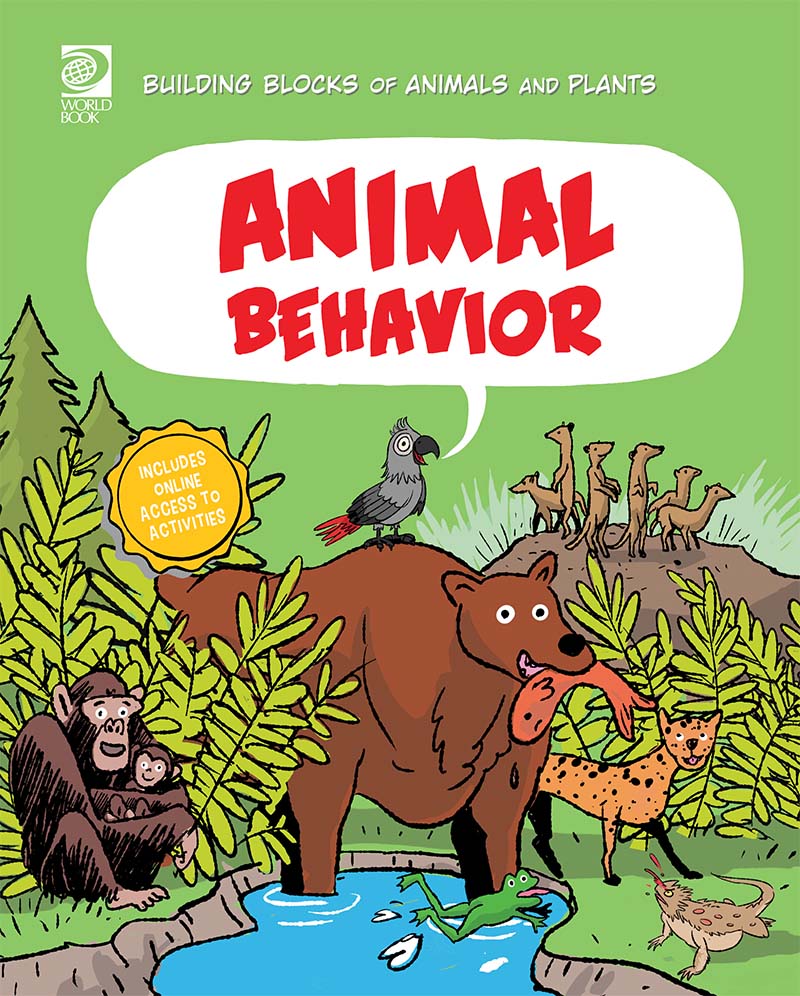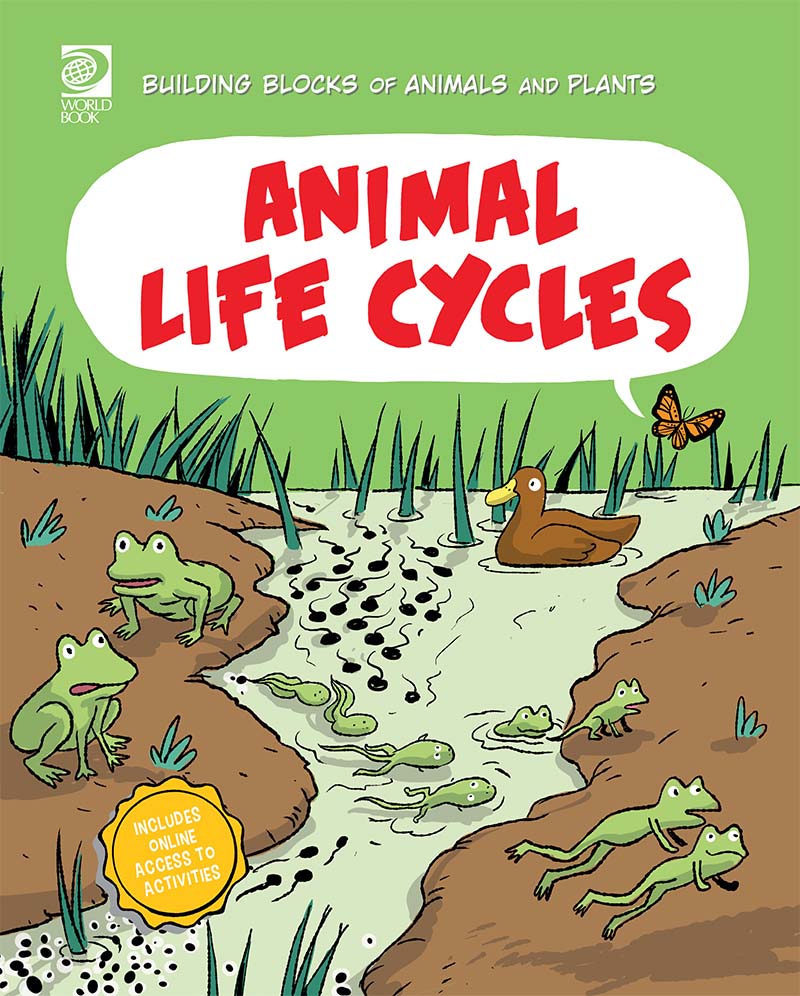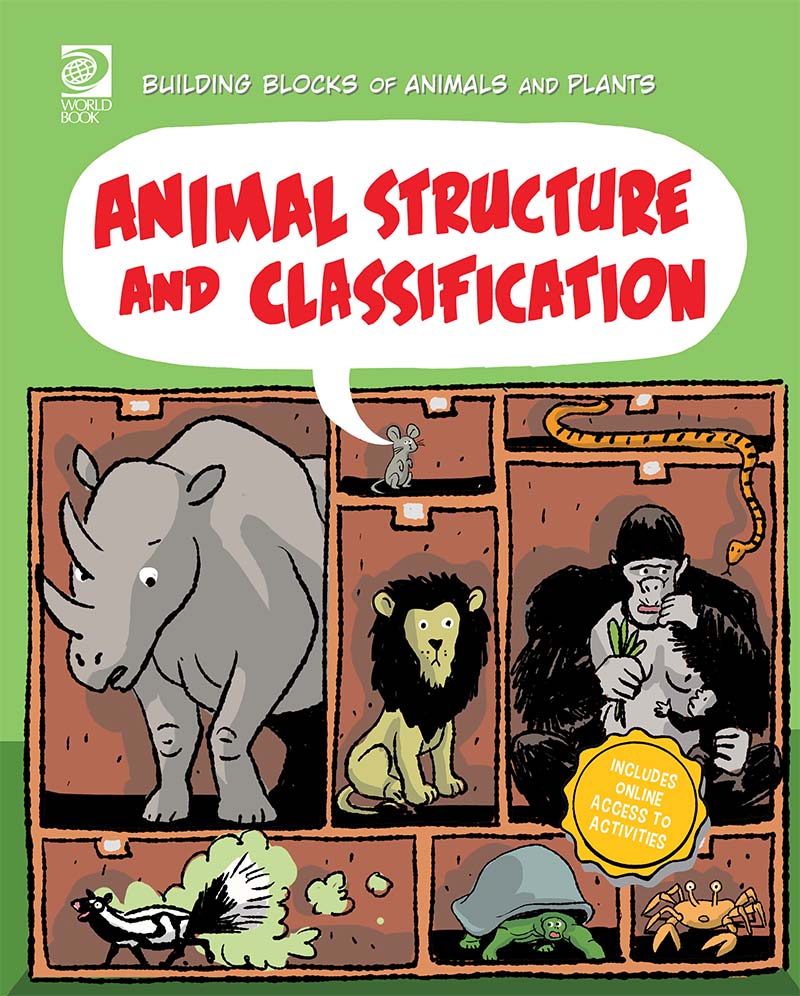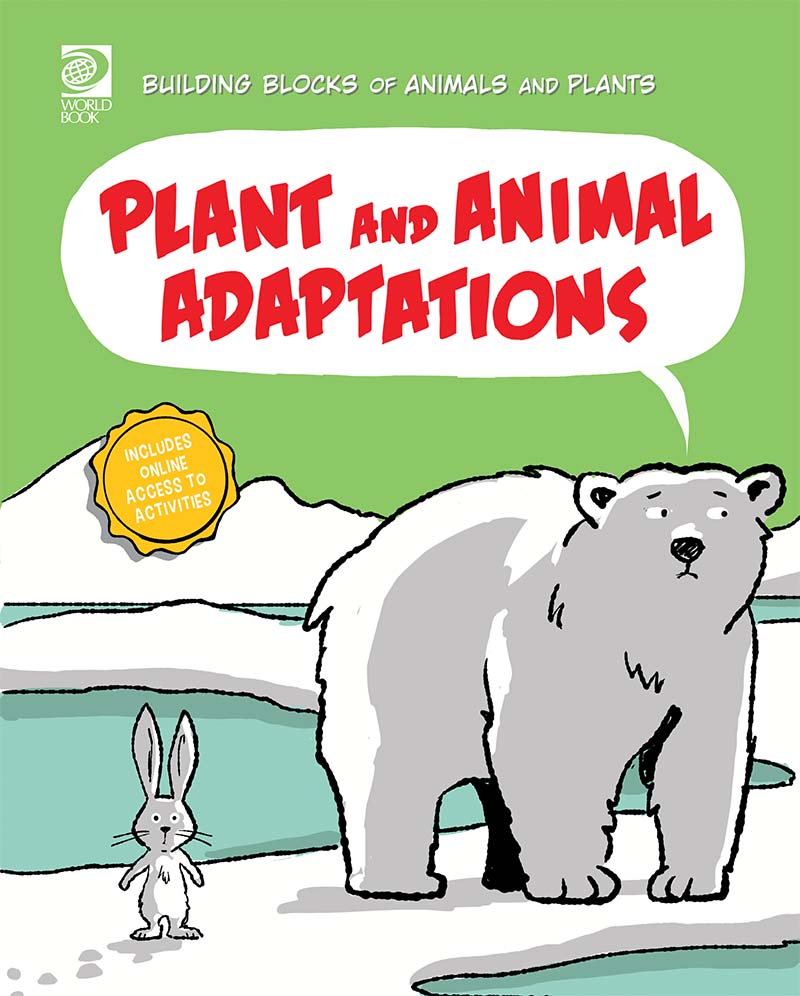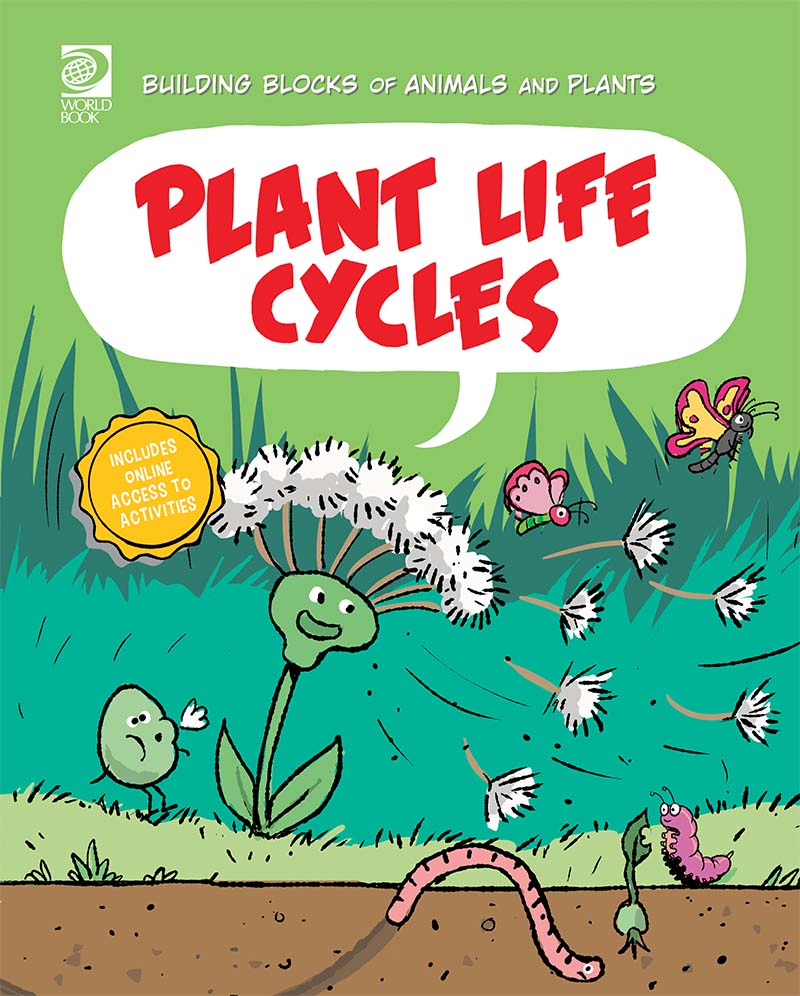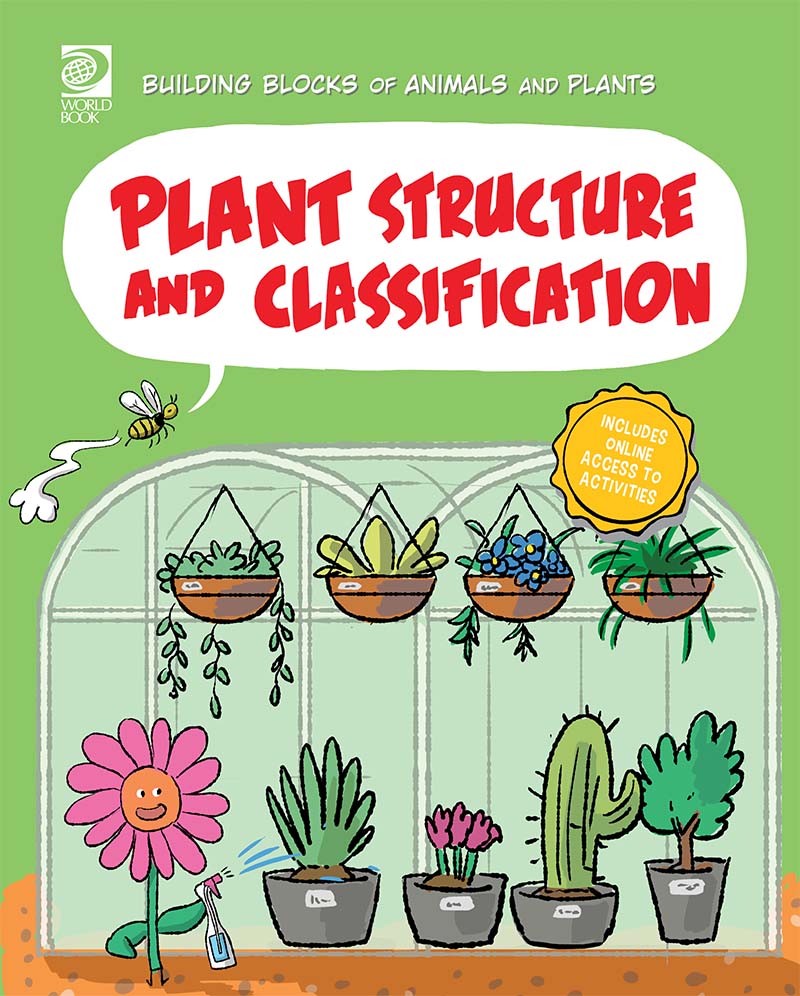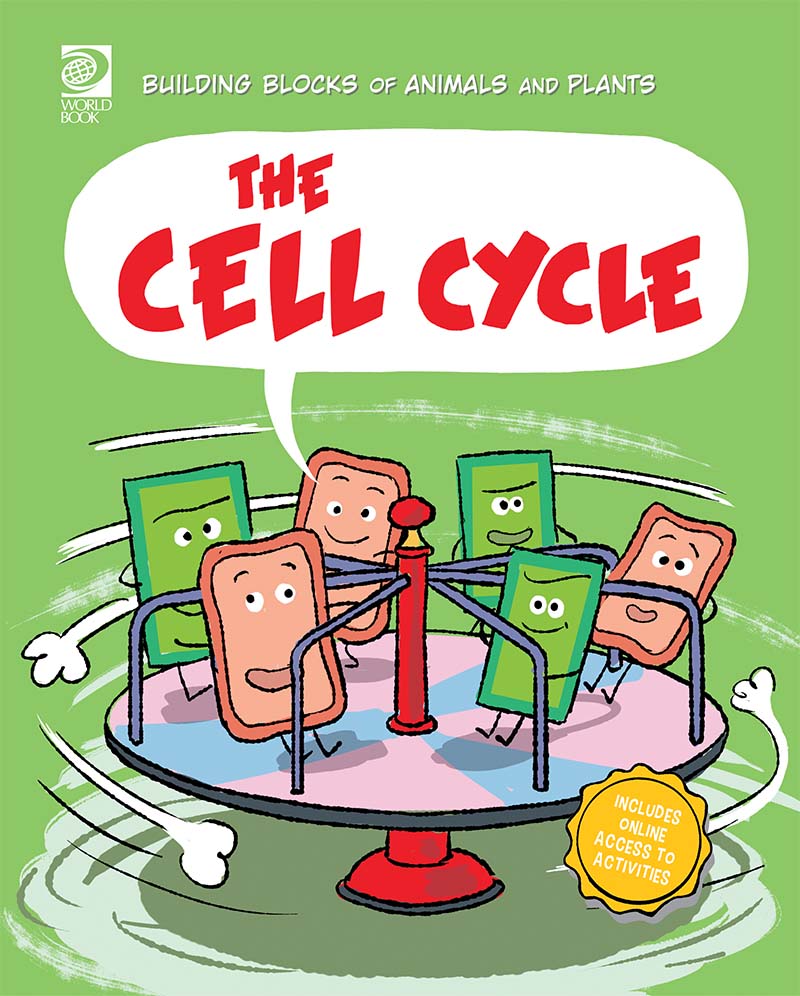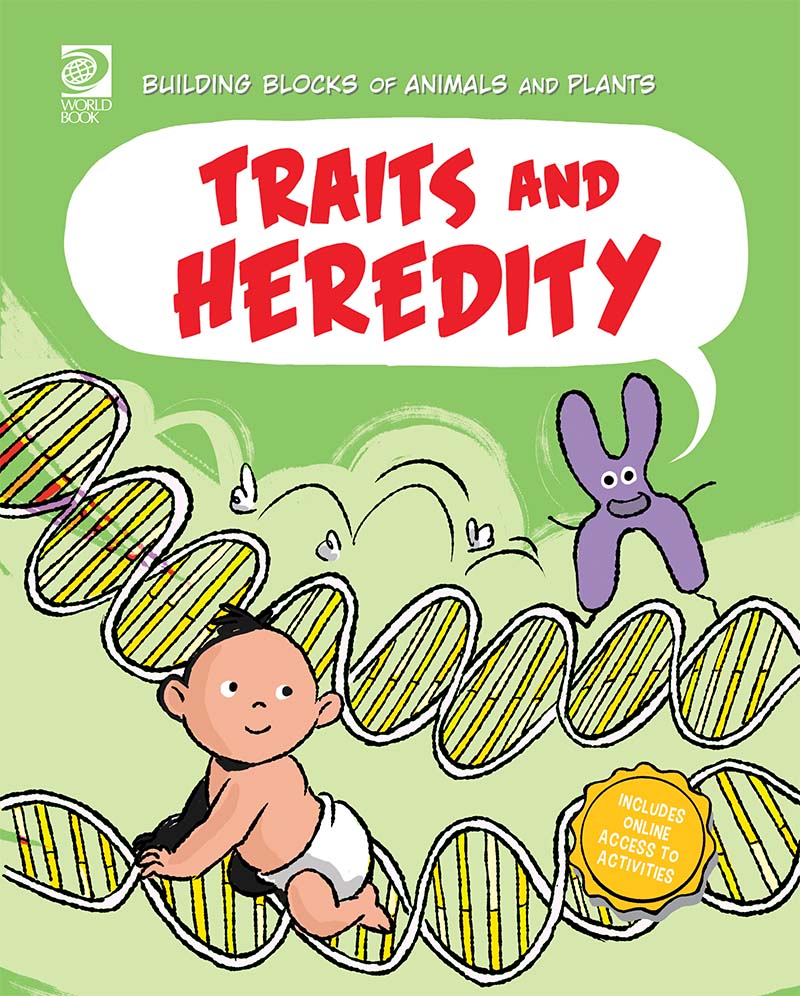Building Blocks of Animals and Plants
The Building Blocks of Animals and Plants Educator Section includes tools as well as ready-to-use classroom materials. Educators can see how the Next Generation Science Standards align with the series, organized by the grade level(s) they teach. In addition, educators will have access to reading resources such as discussion guides and comprehension checks as well as fun classroom activities like vocabulary bingo! The Educator Section will also include engaging lessons, centered around standards, with built-in differentiation options to support all learners as they continue to explore this content.
Building Blocks of Animals and Plants Standards Alignment
Use this section to view how the Next Generation Science Standards align to the Building Blocks of Animals and Plants series.
Next Generation Science Standards
-
3rd Grade students who demonstrate understanding can:
Domain and Disciplinary Core Idea Performance Expectation Building Blocks Book(s) 3-LS1. From Molecules to Organisms: Structures and Processes 3-LS1-1. Develop models to describe that organisms have unique and diverse life cycles but all have in common birth, growth, reproduction, and death Animal Life Cycles, The Cell Cycle, Plant Life Cycles, Plant Structure and Classification 3-LS2. Ecosystems: Interactions, Energy, and Dynamics 3-LS2-1. Construct an argument that some animals form groups that help members survive. Animal Behaviors, Plant Structure and Classification 3-LS3. Heredity: Inheritance and Variation of Traits 3-LS3-1. Analyze and interpret data to provide evidence that plants and animals have traits inherited from parents and that variation of these traits exists in a group of similar organisms. Animal Behaviors, Animal Life Cycles, Animal Structure and Classification, The Cell Cycle, Plant Life Cycles, Traits and Heredity 3-LS3-2. Use evidence to support the explanation that traits can be influenced by the environment. -Animal Life Cycles, Plant and Animal Adaptations, Plane Life Cycles, Traits and Heredity 3-LS4. Biological Evolution: Unity and Diversity 3-LS4-2. Use evidence to construct an explanation for how the variations in characteristics among individuals of the same species may provide advantages in surviving, finding mates, and reproducing. Plant and Animal Adaptations, Plant Life Cycles 3-LS4-3. Construct an argument with evidence that in a particular habitat some organisms can survive well, some survive less well, and some cannot survive at all. Animal Behaviors, Animal Life Cycles,Plant and Animal Adaptations, Plant Life Cycles 3-LS4-4. Make a claim about the merit of a solution to a problem caused when the environment changes and the types of plants and animals that live there may change. Plant and Animal Adaptations, Plant Life Cycles -
4th Grade students who demonstrate understanding can:
Domain and Disciplinary Core Idea Performance Expectation Building Blocks Book(s) 4-LS1. From Molecules to Organisms: Structures and Processes 4-LS1-1. Develop models to describe that organisms have unique and diverse life cycles but all have in common birth, growth, reproduction, and death. Animal Behaviors, Animal Life Cycles, Animal Structure and Classification, The Cell Cycle, Plant and Animal Adaptations, Plant Life Cycles, Plant Structure and Classification 4-LS1-2. Use a model to describe that animals receive different types of information through their senses, process the information in their brain, and respond to the information in different ways. Animal Behaviors, Plant and Animal Adaptations -
5th Grade students who demonstrate understanding can:
Domain and Disciplinary Core Idea Performance Expectation Building Blocks Book(s) 5-LS1. From Molecules to Organisms: Structures and Processes 5-LS1-1. Support an argument that plants get the materials they need for growth chiefly from air and water. Plant and Animal Adaptations, Plant Life Cycles, Plant Structure and Classification 5-LS2. Ecosystems: Interactions, Energy, and Dynamics 5-LS1-1. Develop a model to describe the movement of matter among plants, animals, decomposers, and the environment. Plant and Animal Adaptations, Plant Life Cycles -
Middle School students who demonstrate understanding can:
Domain and Disciplinary Core Idea Performance Expectation Building Blocks Book(s) MS-LS1. From Molecules to Organisms: Structures and Processes MS-LS1-1. Conduct an investigation to provide evidence that living things are made of cells; either one cell or many different numbers and types of cells. Animal Life Cycles, The Cell Cycle, Plant Life Cycles, Traits and Heredity MS-LS1-2. Develop and use a model to describe the function of a cell as a whole and ways parts of cells contribute to the function. The Cell Cycle MS-LS1-3. Use argument supported by evidence for how the body is a system of interacting subsystems composed of groups of cells. The Cell Cycle, Traits and Heredity MS-LS1-4. Use argument based on empirical evidence and scientific reasoning to support an explanation for how characteristic animal behaviors and specificized plant structures affect the probability of successful reproduction of animals and plants respectively. Animal Behaviors, Animal Life Cycles, Plant and Animal Adaptations, Plant Life Cycles, Plant Structure and Classification MS-LS1-5. Construct a scientific explanation based on evidence for how environmental and genetic factors influence the growth of organisms. Animal Behaviors, Animal Life Cycles, Plant and Animal Adaptations, Plant Life Cycles, Plant Structure and Classification, Traits and Heredity MS-LS1-6. Construct a scientific explanation based on evidence for the role of photosynthesis in the cycling of matter and flow of energy into and out of organisms. The Cell Cycle, Plant and Animal Adaptations, Plant Life Cycles, Plant Structure and Classification MS-LS2. Ecosystems: Interactions, Energy, and Dynamics MS-LS2-1. Analyze and interpret data to provide evidence for the effects of resource availability on organisms and populations of organisms in an ecosystem. Plant and Animal Adaptations, Plant Life Cycles MS-LS2-2. Construct an explanation that predicts patterns of interactions among organisms across multiple ecosystems. Animal Behaviors MS-LS2-3. Develop a model to describe the cycling of matter and flow of energy among living and nonliving parts of an ecosystem. The Cell Cycle MS-LS2-4. Construct an argument supported by empirical evidence that changes to physical or biological components of an ecosystem affect populations. Animal Life Cycles, Plant and Animal Adaptations, Plant Life Cycles MS.LS2-5. Evaluate competing design solutions for maintaining biodiversity and ecosystem services. Plant and Animal Adaptations, Plant Life Cycles, Traits and Heredity MS-LS3. Heredity: Inheritance and Variation of Traits MS.LS3-1. Develop and use a model to describe why structural changes to genes (mutations) located on chromosomes may affect proteins and may result in harmful, beneficial, or neutral effects to the structure and function of the organism. Plant Structure and Classification, Traits and Heredity MS-LS3-2. Develop and use a model to describe why asexual reproduction results in offspring with identical genetic information and sexual reproduction results in offspring with genetic variation. Plant Life Cycles, Traits and Heredity MS-LS4. Biological Evolution: Unity and Diversity MS-LS4-1. Analyze and interpret data for patterns in the fossil record that document the existence, diversity, extinction, and change of life forms throughout the history of life on Earth under the assumption that natural laws operate today as in the past. Animal Structure and Classification, Plant Life Cycles, Plant Structure and Classification MS-LS4-3. Analyze displays of pictorial data or compare patterns of similarities in the embryological development across multiple species to identify relationships not evident in the fully formed anatomy. Animal Structure and Classification, The Cell Cycle MS-LS4-4. Construct an explanation based on evidence that describes how genetic variations of traits in a population increase some individuals’ probability of surviving and reproducing in a specific environment. Plant and Animal Adaptations, Plant Life Cycles, Plant Structure and Classification, Traits and Heredity MS-LS4-5. Gather and synthesize information about the technologies that have changed the way humans influence the inheritance of desired traits in organisms. Plant Structure and Classification, Traits and Heredity MS-LS4-6. Use mathematical representations to support explanations of how natural selection may lead to increases and decreases of specific traits in populations over time. Plant and Animal Adaptations, Plant Life Cycles, Traits and Heredity
Reading Resources
Each book in the Building Blocks of Animals and Plants series comes with a Discussion Guide as well as a Comprehension Check! Each Discussion Guide includes 10 questions, as well as potential answers, and is intended to be used during or after reading the text to help students better understand the content. Each Comprehension Check also includes 10 questions and comes with an Answer Key. The Comprehension Check is intended to be used after reading and is a great assessment option.
Classroom Activities
These activities are designed for classroom use and can be used in both the small group and/or whole group setting. These activities bring some fun, engagement, and reflection to students’ learning!
Frayer Model Vocabulary
Use this activity to reinforce Tier 3, content-specific vocabulary from the Building Blocks of Animals and Plants series. This activity can encourage your students to think flexibly and creatively while they work.
Cell Organelles
In this activity, students will read an article to extend their understanding of specific organelles. Students will create a table and use it to describe each organelle, whether they are found in animal or plant cells, and their functions.
Metamorphosis: Sequence the Stages
Bring art and writing into your science lessons with this activity! Students will review what they know about metamorphosis and animal life cycles and choose one animal to study. They will create colorful sketches and write a paragraph to sequence their animal’s egg, larva, pupa, and adult life cycle stages.
Lesson Plans
World Book has created lesson plans that can be used to help deepen students’ understanding of the Building Blocks of Animals and Plants concepts. These full lesson plans are aligned to standards, include assessment options, describe possible differentiation considerations, and include a variety of ways for students to stay engaged in their learning. Many materials are included as quick and easy downloads for your convenience.
Natural Selection and Adaptations
This lesson is designed for students in grades 3-5. Students will read about the concept of natural selection and discuss how animals and plants adapt to their surroundings to survive. In addition, students will independently read about four organisms’ adaptations and use their inferring skills to determine why those adaptations were necessary for survival.
The Naked Egg Experiment
This lesson and experiment are best suited for students in grades 6-8 and take multiple days to complete. Students will deepen their understanding of osmosis by reading an article and completing an experiment. Students will observe the process of osmosis through a chicken egg, hypothesize about why the cell functions as it does, and reflect on their understanding.
Bean Seed Germination Experiment
This multiday lesson and experiment are best suited for students in grades 3-5. Students will germinate their own bean seeds and document their observations and hypotheses along the way. This cross-curricular lesson also addresses Common Core Math Standards and includes an opportunity for students to graph and analyze their data.
